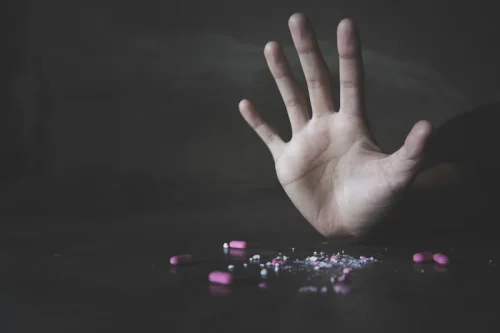Although 14 percent of drivers in alcohol-related fatal crashes in 2002 were between 16 and 20, this age group represents only 7 percent of the population. Likewise, 49 percent of drivers in alcohol-related fatal crashes were ages 21 to 45, and this age group makes up 35 percent of the population. Most drivers in alcohol-related fatal crashes are male (73 percent) (NHTSA 2003a,e). In 2002, 39 percent of deaths of motorists in automobiles were alcohol related (7,954 out of 20,416), compared with 42 percent of deaths of motorists in vans or light trucks (5,148/12,182), and 44 percent of motorcycle deaths (1,422/3,244). Though deaths of bicyclists (from both crashes with cars and bike accidents not involving cars) are much less frequent, 37 percent of them in 2002 were alcohol related (i.e., either the driver or the bicyclist was drinking) (243/660). In contrast, only 13 percent of deaths among motorists in large trucks were alcohol related (87/684) (NHTSA 2003a).
Journal of Safety Research
Despite marked reductions in the proportions of motorists who drive after drinking and in alcohol-related traffic fatalities, alcohol-impaired driving remains a serious threat to the nation’s health. In 2002, 41 percent of traffic deaths and 9 percent of traffic injuries were alcohol related. As many as 44 percent of people killed in crashes involving drinking drivers are people other than the drinking driver.
How AI and Data Forensics Are Revolutionizing Car Accident Claims
- For example, they may be tempted to use their phone or send a text instead of keeping their eyes on the road.
- In 2017, drunk drivers with a BAC of 0.08% were responsible for the deaths of 10,784 people around the United States.
- There are numerous resources available, including counseling, support groups, and treatment programs, that can assist individuals in overcoming addiction and making positive changes in their lives.
- The concept of “legally drunk” emerged with the establishment of specific BAC limits.
- In almost every racial/ethnic group, the age group with the highest percentage of drivers and pedestrians who died in alcohol-related crashes was the 21- to 49-year-old group (Voas and Tippetts 1999).
Alcohol-dependent people are over-represented in all alcohol-related traffic crashes, as are those who begin drinking at younger ages. Despite overall marked reductions in alcohol-related traffic deaths since the early 1980s, there has been little reduction since the mid-1990s, and alcohol-related traffic deaths have increased slightly in the past 3 years. The act of driving under the influence (DUI), a term often used interchangeably with drunk driving, is a perilous decision with far-reaching consequences. When an individual chooses to operate a vehicle after consuming alcohol, they not only endanger their own life but also the lives of countless others sharing the road.
Impaired driving behavior
Conservative estimates suggest that the effects of alcohol-impaired driving and the mission to tackle it cost the United States billions of dollars every year. If you care about your future, the future of your loved ones and the health of our country’s economy, do not drink and drive. Drunk driving is the most commonly committed criminal offense in the United States, with an estimated 300,000 people driving under the influence of alcohol every day. Furthermore, alcohol-impaired driving incurs serious, long-lasting consequences for the offending drivers themselves and every innocent person affected by their crimes. Indiana state DUI laws impose enhanced penalties for drivers with particularly high BAC levels.
- These belts, designed to provide structural stability, can inadvertently act as footholds, allowing children to climb into the pool unsupervised, increasing the risk of drownings and injuries.
- In cases of alcohol-related traffic fatalities, however, blood testing must be used to estimate alcohol levels.
- Mothers Against Drunk Driving (MADD) advocates for stricter laws and provides support to victims of drunk crashes.
- The average distance of the average drinking–driving trip was greater than 16.7 miles for males, compared with 8.5 miles for females.
National surveys also reveal that males and people ages 21 to 45 are the most likely to drive after drinking. Although drivers ages 16 to 20 accounted for only 12 million of 957 million drinking–driving trips in 1999, the average BAC among young drinking drivers was 0.10 percent, more than three times the average BAC level for all drinking drivers. Drivers under 21 in all States tend to drive with more passengers in their vehicles. Despite laws making it illegal to sell alcohol to people under 21 and https://ecosoberhouse.com/ for drivers that age to drive after any drinking, most people in this age group who drive after drinking are unaware that it is illegal to do so. Forty-nine States have laws requiring front seat motor vehicle occupants to wear safety belts. In 31 States, police can only give citations for failure to wear safety belts if a vehicle is stopped for another moving violation (i.e., secondary enforcement).
The US Department of Transportation reports that drivers with higher blood alcohol content (BAC) are 7 times more likely to be involved in a fatal accident than a sober driver. Impairment sets in long before it becomes noticeable and well before reaching the legal limit for BAC. A small amount of alcohol can impair judgment and vision, depending on factors such as gender, weight, and others. Therefore, just because a person is not “legally” drunk, it does not mean it consequences of driving drunk include: is safe for them to drive. The only way to protect yourself and others from the dangers of drunk driving is to refrain from driving after consuming any alcohol.
Many resources are available to those affected by drunk driving, and treatment can make a world of difference. In addition, a recent review of 112 studies provided strong evidence that impairment in driving skills begins with any departure from zero BAC (Moskowitz and Fiorentino 2000). The authors concluded that virtually all drivers tested in the studies reviewed exhibited impairment on some critical driving measure by the time they reached a BAC of 0.08 percent.
Support To Cut Back or Quit Drinking
With the exception of life or death emergencies, drunk drivers gain very little from choosing to drive while intoxicated. In the United States, the National Highway Traffic Safety Administration (NHTSA) reports that about one-third of all traffic-related deaths involve alcohol. In 2022, there were over 11,000 fatalities in alcohol-impaired driving crashes. According to the World Health Organization (WHO), alcohol contributes to approximately 20-30% of all road traffic deaths worldwide.
The requirement to install an IID can be costly and inconvenient, but it serves as a deterrent to further drunk driving and helps protect public safety. Motorcycle operators involved in fatal crashes were found to have the highest percentage (28%) of alcohol-impaired drivers than any other vehicle types. Every day, about 37 people in the United States die in drunk-driving crashes — that’s one person every 39 minutes. About one-third of fatal car crashes in the United States in 2019 involved drunk drivers. Every day, 29 people in the U.S. die in an alcohol-related car crash, equaling one preventable death every 50 minutes. The short-term impacts of drunk driving include traffic violations, arrests, and immediate health risks such as injuries from accidents.
Intro to Drunk Driving Accidents
Drivers with a level of .16 die in the most fatal crashes each year, nearly 550 annually. For those age 21 and under, zero-tolerance laws criminalize driving with any amount of alcohol. States may also have enhanced penalties in place for those who drive with very high BACs, drive impaired with minors in the vehicle or have multiple convictions. Early laws addressing drunk driving were relatively lenient compared to today’s standards. As understanding of the dangers of alcohol-impaired driving grew, so did the strictness of DUI laws. Over the decades, legal limits for blood alcohol concentration (BAC) have been lowered, and penalties have become more severe for an intoxicated person.






